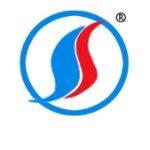Stainless steel rods have broad application prospects.
Stainless steel rod specifications: Ф1.0MM and above 250mm or less Hot-rolled and forged stainless steel rods of size (diameter, side length, thickness or opposite side distance) not more than 250mm.
Stainless steel rod material: 304, 304L, 321, 316, 316L, 310S, 630, 1Cr13, 2Cr13, 3Cr13, 1Cr17Ni2, dual phase steel, antibacterial steel and other materials.
Stainless steel rods can be divided into hot rolling, forging and cold drawing according to the production process.
Hot rolled stainless steel round bars are available in sizes from 5.5 to 250 mm.
Among them: small stainless steel round bars of 5.5-25 mm are mostly supplied in straight strips, often used as steel bars, bolts and various mechanical parts;
Stainless steel round bars larger than 25 mm are mainly used for the manufacture of mechanical parts or for seamless steel tube blanks.
Stainless steel rod classification
The components are classified into Cr-based (SUS400), Cr-Ni-based (SUS300), Cr-Mn-Ni (SUS200), and precipitation hardening (SUS600).
200 Series – Chromium – Nickel – Manganese Austenitic Stainless Steel
300 Series – Chromium – Nickel Austenitic Stainless Steel
301—Good ductility for molding products. It can also be hardened by machine speed. Good weldability. Wear resistance and fatigue strength are better than 304 stainless steel.
302—Corrosion resistance is the same as 304, because the carbon content is relatively high and the strength is better.
303—It is processed by adding a small amount of sulfur and phosphorus.
304—that is, 18/8 stainless steel. The GB grade is 06Cr19Ni10.
309—It has better temperature resistance than 304.
316—After 304, the second most widely used steel grade, mainly used in the food industry and surgical equipment
400 Series – Ferritic and Martensitic Stainless Steel
408—Good heat resistance, weak corrosion resistance, 11% Cr, 8% Ni.
409—The cheapest model (British and American), usually used as a car exhaust pipe, is a ferritic stainless steel (chrome steel).
410—Martensite (high-strength chrome steel) with good wear resistance and poor corrosion resistance.
416—The addition of sulfur improves the processing properties of the material.
420—“cutting grade” martensitic steel, similar to the earliest stainless steel of Brinell high chromium steel. Also used for surgical knives, it can be done very brightly.
430 – ferritic stainless steel, for decoration, for example for automotive accessories. Good formability, but poor temperature resistance and corrosion resistance.
440—High-strength cutting tool steel with slightly higher carbon content. After proper heat treatment, it can obtain higher yield strength and hardness can reach 58HRC, which is among the hardest stainless steel.
500 series – heat resistant chrome alloy steel.
600 Series – Martensitic precipitation hardening stainless steel.
630—The most commonly used type of precipitation hardened stainless steel, also commonly referred to as 17-4; 17% Cr, 4% Ni.

